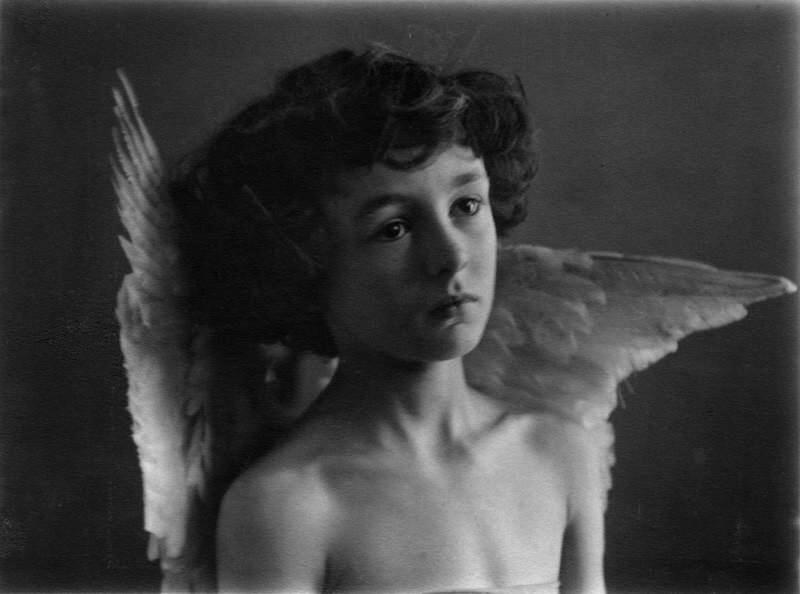
Photographers: Eveleen Tennant Myers--Photography

Figure 1.--Eveleen took up photography in part go capture images of her children's childhood. Here we see Leopold done up as a cherub. Notice the wings. It looks rather like a pre-Rhaphelite image, an important Victorian srt movement. Julia Margaret Cameron who influenced Meyers composed images like this. Wveleen took more photographs of Leopold than the other children. We suspect he was her favorite. Source: Image no. mw150346. National Portrait Gallery.
|
|
Eveleen apparently lacking artistic skills of her sister took up photography (1888). Modern snap shot photography had not yet been developed. Photography was still a rather complicated matter and mostly a male persuit. Her initial interest was taking portraits of the children. Biographers believe that the idea was inplanted when as ahild she was photographed by Julia Margaret Cameron while on a vacation to the Isle of Wight. Cameron is the first female photographer of any importance that we have noted. Her photographic activity seems to work seems to have been rather short lived (1888-mid-1890s), but she plunged into it seriously. She set up a studio in their home, Leckhampton House. She did her own developing and printing. Her subjects included both her children and their residence, Leckhampton House. Many of the children's photographs are of the children playing or portraits. She seems to have desired to capture the fleeting years of childhood, but the children are only one part of her body of work. She was mostly self taught, but she had friends her oferred her useful advice. Albert George Dew Smith, a lens maker and gifted amateur photographer was helpful. She also owned a number of original prints by Julia Margaret Cameron whose work she admired. And we notice her psing the children in Cameronesque ibfluenced compositions. These attempts at pre-Rhaphelite tyoe images with Leopold posed as a cherubs with wings (figure 1). We do not know why Harold was not used as a cherub as he was a more suitable age. But what makes her photography particularly notable and importantvhistorically is that among her social set she developed a reputation as a talented pgotographer. Myers along with two other female British photograophers, Cameron and Alice Hughes (1857-1939), had unparalled access to the British political and intellectual elite. In Meyer's case it was at forst through her mother's salon in London. And then her husband had many professional connections at Cambridge University. As a result, Meyers was able to produce a notable series of portraits of Robert Browning (1899). The images are of Browing as ab older man. And she published another portfolio with images of Gladstone, Chamberlain, Balfour, and Galton (1900). Eveleen seems to have lost interest in photography after the death of her husband . She left Leckhampton, where her studio was located, and devoted herself to publishing her husband's papers. Another factor may have been thst the chikdren were getting older.
HBC

Navigate the Boys' Historical Clothing Web Site:
[Return to:Main Eveleen Tennant Meyers page]
[Return to:Main photographer page]
[Introduction]
[Activities]
[Biographies]
[Chronology]
[Clothing styles]
[Countries]
[Bibliographies]
[Contributions]
[FAQs]
[Glossaries]
[Images]
[Links]
[Registration]
[Tools]
[Boys' Clothing Home]
Created: 7:16 AM 8/20/2012
Last updated: 7:16 AM 8/20/2012



